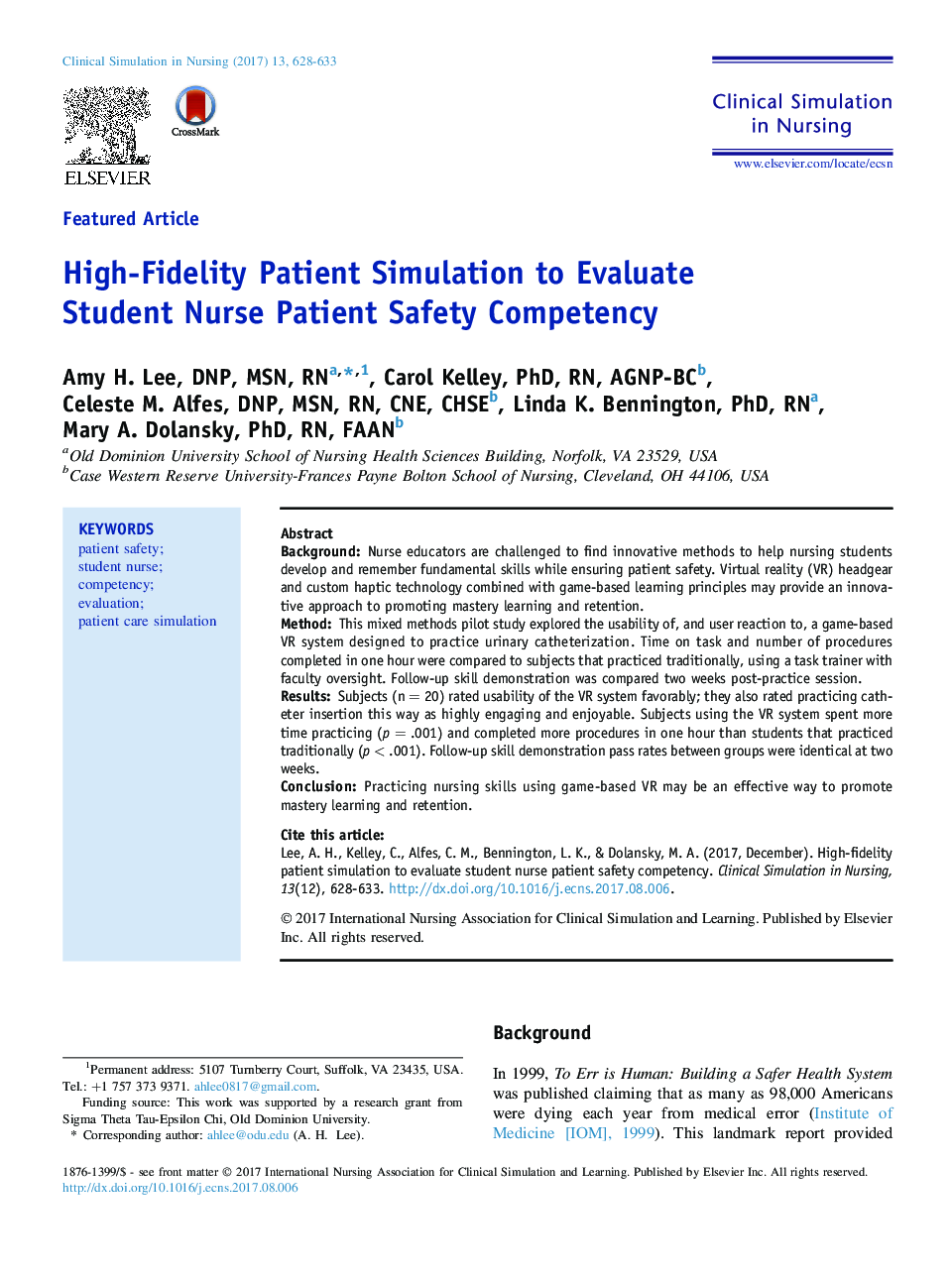| کد مقاله | کد نشریه | سال انتشار | مقاله انگلیسی | نسخه تمام متن |
|---|---|---|---|---|
| 5567442 | 1563753 | 2017 | 6 صفحه PDF | دانلود رایگان |

- Patient care simulations have proven to be effective to enhance student learning.
- This project used a High Fidelity Patient Simulation to evaluate the safe patient care competency of entry level student nurses who had received safe patient care didactic content.
- The six patient safety competencies evaluated were introduction of self, hand hygiene, patient identification, call bell and personal items within reach and handoff using SBAR.
- Information from the HFPS provided faculty with knowledge about student safe patient care competency prior to the initial clinical experience.
- Faculty were reminded to provide continued emphasis of the importance of all basic patient safety competencies during clinical practice rotations.
BackgroundNurse educators are challenged to find innovative methods to help nursing students develop and remember fundamental skills while ensuring patient safety. Virtual reality (VR) headgear and custom haptic technology combined with game-based learning principles may provide an innovative approach to promoting mastery learning and retention.MethodThis mixed methods pilot study explored the usability of, and user reaction to, a game-based VR system designed to practice urinary catheterization. Time on task and number of procedures completed in one hour were compared to subjects that practiced traditionally, using a task trainer with faculty oversight. Follow-up skill demonstration was compared two weeks post-practice session.ResultsSubjects (n = 20) rated usability of the VR system favorably; they also rated practicing catheter insertion this way as highly engaging and enjoyable. Subjects using the VR system spent more time practicing (p = .001) and completed more procedures in one hour than students that practiced traditionally (p < .001). Follow-up skill demonstration pass rates between groups were identical at two weeks.ConclusionPracticing nursing skills using game-based VR may be an effective way to promote mastery learning and retention.
Journal: Clinical Simulation in Nursing - Volume 13, Issue 12, December 2017, Pages 628-633